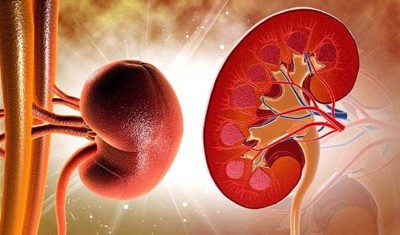Đối tượng nghiên cứu: 36 bệnh nhân(BN) được chỉ định lọc máu chu kỳ hơn nửa năm, chia làm 2 nhóm, nhóm I(nghiên cứu -NC): 18 bệnh nhân lọc máu chu kỳ sử dụng dịch chiết Đan Sâm, nhóm II (đối chứng – ĐC): 18 bệnh nhân chỉ lọc máu chu kỳ. Liệu trình điều trị là 21 ngày cho cả 2 nhóm.
Phương pháp nghiên cứu: Thử nghiệm lâm sàng can thiệp, so sánh trước sau can thiệp và có đối chứng.
Kết quả và bàn luận: Mức AOPP và MDA thấp hơn và SOD cao sau 1, 2 và 3 tháng điều trị kết hợp dịch chiết Đan Sâm và CRP thấp sau 3 tháng điều trị ở nhóm điều trị hơn so với những đường cơ sở và những người tại các thời điểm tương ứng trong nhóm thường xuyên CHD (P 0,05).
Abstract
OBJECTIVE:
To investigate the effects of Salvia miltiorrhiza (SM) on oxidative stress and microinflammatory state in patients undergoing continuous hemodialysis (CHD).
METHODS:
Thirty-six patients who had received CHD for over half a year were assigned into the routine CHD group (18 cases) and the treated group treated with routine CHD plus SM (18 cases). Meanwhile, 18 healthy adults were taken as the normal control. Indexes related with oxidative stress [malondialdehyde (MDA), advanced oxidative protein products (AOPP) and superoxide dismutase (SOD)) and microinflammation C-reactive protein (CRP), interleukin-6 (IL-6), and tumor necrosis factor-alpha (TNF-alpha) were detected before and after 1, 2 and 3 months of treatment.
RESULTS:
The levels of AOPP, MDA, CRP, IL-6 and TNF-alpha in patients were higher and SOD was lower than those in the normal control at all the time points (P < 0.01). Compared with the baseline, the levels of AOPP and MDA in the routine CHD group significantly increased and SOD decreased after 3 months of treatment (P < 0.05), but changes of CRP, IL-6 and TNF-alpha showed no significance though there were somewhat increment (P > 0.05). The levels of AOPP and MDA were lower and SOD was higher after 1, 2 and 3 months of SM combined treatment, and CRP was lower after 3 months of treatment in the treated group than those of baselines and those at the corresponding time points in the routine CHD group (P < 0.01), but IL-6 and TNF-alpha reduced insignificantly (P > 0.05).
CONCLUSION:
Hemodialysis may aggravate the oxidative stress and microinflammation in patients, which could be obviously alleviated by SM.

 Dược sĩ Nguyệt Ánh
Dược sĩ Nguyệt Ánh




